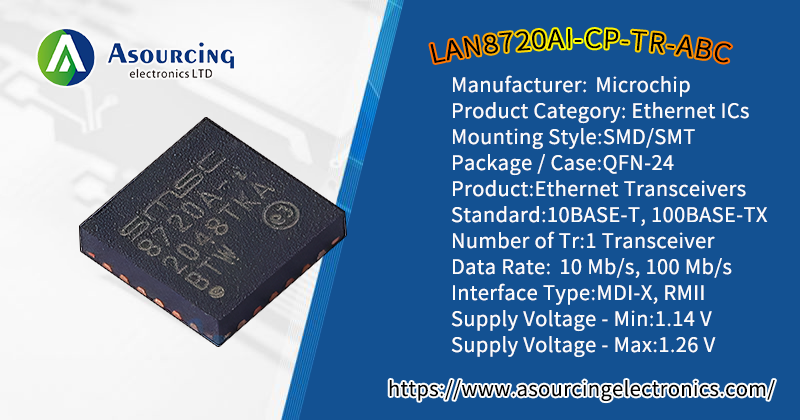Performance and application of LAN8720AI-CP-TR-ABC
LAN8720AI-CP-TR-ABC is an Ethernet PHY (physical layer) transceiver chip widely used in embedded systems that require network connectivity. The following is a brief introduction to some performance features and application scenarios of the chip:
Performance characteristics
Small package: LAN8720AI-CP-TR-ABC adopts a compact package, suitable for space-constrained designs.
Low power consumption: Designed for low-power applications, it supports the Energy Efficient Ethernet (EEE) standard, helping to reduce the energy consumption of the entire system.
Support auto-negotiation: Able to automatically negotiate 10/100 Mbps connection speed and full/half-duplex mode, increasing system compatibility and flexibility.
High stability: Provide reliable data transmission performance, support Jumbo frames and multiple error detection mechanisms to ensure the stability of network communication.
Compatibility: Compatible with a variety of microcontrollers (MCU) and processor interfaces, supporting MII (Media Independent Interface) and RMII (Reduced Media Independent Interface).
Application scenarios
Due to its small size, low power consumption and flexible connectivity, the LAN8720AI-CP-TR-ABC is suitable for a variety of applications, including but not limited to:
Consumer electronics: smart home devices, web cameras, smart TVs, game consoles, etc.
Industrial control: remote monitoring systems, industrial automation control systems, Internet of Things (IoT) gateways, etc.
Medical equipment: wearable health monitoring equipment, remote diagnostic equipment, etc.
Network communication equipment: routers, switches, network print servers, etc.
Considering the performance and application scope of LAN8720AI-CP-TR-ABC, it is a chip that provides an ideal solution for various applications that require stable network connection, low power consumption and small size. However, in specific applications, choosing the appropriate PHY transceiver still needs to be determined based on the specific requirements and design constraints of the project.























